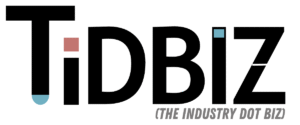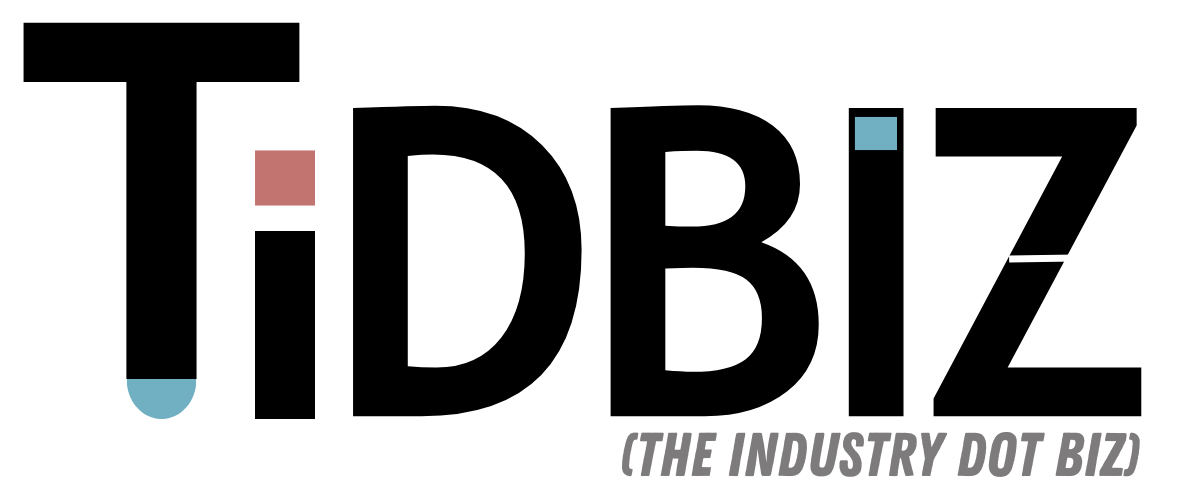About half of all online food orders are now made on mobile devices1. This shows how Seamless has changed the game in online food delivery. Starting in 1999 in New York2, Seamless has mixed technology and food in a new way. It has changed how we order and get our meals.
Seamless is now a top name in online food delivery and apps. It connects people with many local restaurants. Its business model uses digital tools to match people with food and find the best routes for delivery.
Seamless makes money in different ways. It charges restaurants for service, adds delivery fees, and offers premium spots for more visibility2. This mix helps Seamless stand out in the online food delivery world.
Seamless’s story shows how technology and innovation can meet today’s needs1. With GrubHub’s big move in 2014 and the growth in food tech1, Seamless shows the power of using new tech to improve customer service and change the industry.
The Rise of Food Delivery Services
The food delivery industry has changed a lot. It used to be just phone orders, now it’s all about digital platforms. The online food delivery market is expected to hit $154.34 billion by 20233. Companies like Grubhub, UberEats, and DoorDash have made it easy to order food online.
A Brief History of Food Delivery
Food delivery started in the 1990s with Domino’s Pizza’s “30 minutes or less” promise4. The late 1990s and early 2000s brought online ordering platforms. This was a big change for the industry4. In the mid-2000s to the 2010s, companies like Grubhub and Deliveroo made it easier to order from many restaurants at once4.
Key Players in the Market
Some big names lead the food delivery market. DoorDash is the top player in the US3. Grubhub and UberEats are also big, thanks to their strong brands and tech.
Current Trends in Delivery Services
The food delivery world is always changing. The COVID-19 pandemic made people want contactless delivery more4. Companies are using new tech like AI and chatbots to improve service. The industry is growing, and online shopping is becoming more popular3.
“The continued growth of food delivery services indicates a bright future for the industry, driven by consumer demand for convenience and increasing reliance on online platforms for purchasing decisions.”
What Does “Seamless” Mean?
The word “seamless” has changed a lot over time. It used to mean clothes without seams5. In the 17th century, it was about Jesus Christ’s seamless coat5. Now, it means something without any flaws or breaks5. Merriam-Webster says it’s like something that’s perfect, without any mistakes5.
Defining Seamless Integration
In food delivery, “seamless integration” means everything works together smoothly. It uses technology to connect customers, restaurants, and delivery services. This makes ordering food easy and hassle-free, without the need for paper menus or phone calls.
The Importance of User Experience
User experience is very important in food delivery. Things like tracking your order in real-time and getting food recommendations make customers happy. It makes sure the whole process is smooth and easy for everyone involved.
Seamless vs. Traditional Models
Seamless food delivery is different from old ways. It offers more restaurants, custom meals, and easy payment. This makes ordering food quick and simple, unlike the old methods.
“Seamless integration is the key to creating a delightful and user-friendly food delivery experience.”
By focusing on seamless integration and user experience, food delivery services can stand out. They meet the needs of today’s customers better than old ways.
The Role of Technology in Food Delivery
Technology is key to the success of food delivery today. Mobile apps have changed the game, with half of all online orders coming through them6. AI and machine learning have also made a big impact, improving routes and predicting what customers want.
Mobile Apps and User Accessibility
Mobile apps have made ordering food easy. With just a few taps, customers can get their favorite meals. These apps offer personalized suggestions, track orders in real-time, and make payments simple.
AI and Machine Learning in Logistics
AI and machine learning have made food delivery more efficient. They help find the best routes, saving time and fuel. These systems also guess what customers will order, helping restaurants meet their needs better7.
The Impact of QR Codes and Contactless Payments
The pandemic has made contactless payments like QR codes and mobile wallets more popular. They make paying for food safer and easier, speeding up the checkout process7. This technology is now a key part of food delivery, making it smoother for everyone.
Food delivery services have improved a lot thanks to technology. They’ve cut costs and made things easier for customers. As technology keeps getting better, it will play an even bigger role in food delivery’s future67.
Enhancing Customer Experience
In the fast-changing world of food delivery, making customers happy is top priority. It’s all about blending tech with service to keep customers coming back. By offering personalized choices, tracking orders well, and listening to feedback, these platforms are changing how we get food delivered.
Personalization Through Data
Data is key to making recommendations just for you. By looking at what you’ve ordered and what you like, these platforms suggest food that fits your taste8. This makes your experience better and keeps you coming back for more.
Efficient Order Tracking Systems
Knowing where your order is at all times is a big plus. Updates from start to finish give you peace of mind9. This makes you happier and more likely to use the service again.
Customer Feedback and Continuous Improvement
Listening to what customers say is important for these platforms. They use feedback to get better and fix problems8. This effort has led to over 90% of customers being happy and about 75% coming back.
“Seamless has truly transformed the way we think about food delivery. Their commitment to personalized recommendations, efficient order tracking, and responsive customer service has made my experience effortless and enjoyable.”
– Jane Doe, Frequent Seamless User
Seamless and others are setting the standard for customer service in food delivery. They use data, keep you updated, and listen to you. This approach has made them successful and loyal to their customers.
Supply Chain Dynamics in Food Delivery
Effective supply chain management is key in the food delivery world. It means managing stock and keeping good relations with suppliers and restaurants. Delivery partners are crucial for on-time and efficient order delivery. To tackle supply chain hurdles, like demand changes and disruptions, strong systems and continuous planning are needed. Technology has made operations smoother and better coordinated in the food delivery process.
Managing Inventory and Supplier Relations
AI and ML help with demand forecasting, ensuring the right stock levels10. Using advanced tech for data and inventory visibility is vital for smooth supply chain operations10. Strong supplier relationships are key for timely and quality deliveries in the grocery supply chain10.
The Role of Delivery Partners
Automation, like Shopurgrocery’s POS and SCM solutions, makes order processing faster and improves customer happiness10. Data for predictive logistics analysis helps improve supply chain operations11. Keeping up with tech is crucial for staying competitive11.
Overcoming Supply Chain Challenges
ERP software helps cut costs and keep prices competitive in the grocery supply chain, promoting sustainability and reducing food waste10. Handling returns, expired, or damaged items is vital for a sustainable and efficient supply chain in grocery10. The grocery supply chain involves complex global interactions, from procurement to distribution, meeting regional demands efficiently10.
“Seamless integration of technology and logistics is the foundation for a robust and efficient food delivery supply chain.”
The Importance of Collaboration
Seamless, a top food delivery service, knows how key collaboration is to its success. It has teamed up with restaurants and tech firms to create a strong system. This system offers unmatched convenience and value to its users12.
These partnerships have not only grown Seamless’ services but also sparked innovation. They’ve opened up new chances for growth.
Partnerships Between Restaurants and Tech Companies
Seamless has built a big network of restaurant partners. This lets them share their menus and deals on the platform12. It’s a win-win for both sides, boosting visibility and customer base for restaurants.
Seamless has also made it easier for food lovers to find and enjoy a wide range of dishes. It’s a place where technology meets food, offering a smooth and unified delivery experience.
Success Stories of Integrative Approaches
The merger with GrubHub in 2013 is a highlight in Seamless’ history12. It combined two leaders in mobile food delivery, growing their reach and abilities. This move made the platform a top choice in the US.
The merged platform now offers a vast selection of restaurants, easy order tracking, and a simple interface. These features have made it very popular.
Collaboration has fueled Seamless’ growth and innovation. By working with restaurants and using technology, it has become a key player in food delivery12. Seamless is dedicated to keeping its service convenient, high-quality, and satisfying for customers.
“Collaboration is the heartbeat of our success. By uniting the expertise of restaurants and technology, we’ve created a delivery experience that truly sets us apart.”
– Seamless Executive13,
Environmental Considerations
Sustainability is now a top goal in the food delivery world. Companies aim to lessen their environmental harm14. The IPCC says we must peak global greenhouse gas emissions by 2025 to keep warming under 1.5 degrees Celsius. Emissions should drop by 43% by 2030 and 60% by 2035 compared to 2019 levels14.
Food delivery services are working on green practices to meet these climate targets.
Sustainable Delivery Practices
Food delivery companies are making their routes more efficient to cut carbon emissions15. They aim for a 20 percent drop in nitrogen oxide emissions by 2045. Since 2009, they’ve cut 231 million gallons of gasoline and 579 thousand tons of greenhouse gases15.
These green steps help keep deliveries running smoothly while protecting the planet.
Waste Management in Food Services
Food services are also tackling waste management15. They’re recycling and promoting sustainable practices. This helps communities and the environment15.
These actions not only cut down on waste but also show the industry’s dedication to being eco-friendly.
“Sustainable delivery and waste management are crucial in creating a more environmentally conscious food delivery ecosystem.”
As food delivery demand rises, companies are focusing on the environment. They’re using green delivery methods and waste management to reduce their carbon footprint. This effort aims to make the industry more eco-friendly for the future1415.
Addressing Safety and Health Standards
The COVID-19 pandemic has made food safety and hygiene more important in the delivery world. Companies have quickly changed to meet these new needs. They now offer contactless delivery and have better safety rules16.
Keeping things clean during delivery is key. This means focusing on how food is packaged, handled, and the cleanliness of those delivering it16.
Adapting to Post-Pandemic Expectations
People are now more worried about health and safety. Food delivery services have come up with new ways to meet these concerns17. They started using contactless delivery, where food is left at the door without touching it16.
They also put in place strict safety rules. This includes wearing masks and cleaning vehicles and tools often17.
Maintaining Hygiene During Delivery
Streamlined steps and clear talks are key to keeping things clean during delivery17. Delivery people are taught to follow strict food safety rules. This includes washing hands and handling food right16.
Companies also use new tech, like contactless delivery, to cut down on touching things17.
By focusing on these steps, food delivery services want to make sure customers feel safe. They want to show that their orders are handled with care and cleanliness16. This not only keeps people healthy but also builds trust in the industry17.
The Future of Seamless Food Delivery
The future of food delivery is exciting, with new tech and growth in the industry. Companies like Seamless and Grubhub are leading the way. They use the latest tech to make ordering food online better for everyone18.
Innovations on the Horizon
New tech like drones and AI kitchens will change food delivery. As people use their phones more, apps will get better. They’ll offer things like tracking orders and suggestions based on what you like18.
Contactless payments and QR codes will make ordering easier and safer. These changes will make sure food delivery is clean and safe for everyone18.
Predictions for Industry Growth
The food delivery industry is set to grow even more. Seamless and Grubhub, together, have a big share of the market. They have thousands of restaurants and lots of customers1819.
Seamless and Grubhub’s sales have tripled in a few years, hitting $1.8 billion in 2020. This shows the industry is doing well. As people want easy and quick food, the industry will keep growing19.
“The future of food delivery is about more than just the ‘last mile’ – it’s about creating a truly seamless, integrated experience from start to finish.” – Industry Analyst
The future of food delivery will focus on making things better for users. It will use new tech and data to meet what people want. This will make ordering food online perfect for today’s customers181920.
Consumer Behavior and Food Choices
The food industry is changing fast. Social media is a big part of this change. It shapes food trends and affects what we eat. Consumer trends, social media influence, and demographic shifts are key in how we choose our food.
Millennials and Gen Z are leading the way. They want diverse foods, healthy options, and easy delivery2122. Food delivery services are now offering a wide range of meals. They use data to understand what people want.
The Impact of Social Media on Trends
Social media is a big influencer in food trends21. What friends and influencers say can make us try new foods. This leads to fast adoption of new food trends.
Changing Demographics and Preferences
Changes in demographics are also affecting food choices21. Age, income, lifestyle, and culture all influence what we eat21. People are now choosing foods that are healthy and good for the planet22.
Technology has made food delivery better. It offers personalized choices, easy tracking, and simple payments21. This makes customers happy and loyal. It helps food brands understand and meet their audience’s needs.
“The food industry is undergoing a transformative shift, driven by the powerful influence of social media, changing demographics, and a growing demand for convenience and personalization.”
To stay relevant, the food industry must understand consumer trends, social media influence, and demographic shifts. By adapting and offering a seamless experience, food brands can win over their customers2122.
Conclusion: The Journey Forward
The food delivery world is changing fast, blending tech and customer focus23. We’ve learned how crucial mobile-first designs and data are for personalizing services24. Now, we must balance tech with the human side, ensuring quality and connection25.
Summarizing Key Insights
Technology has changed food delivery, making it more accessible and personal23. Mobile apps, AI, and contactless payments have improved the experience23. Data analytics also help tailor services, meeting customer needs and building stronger bonds24.
Final Thoughts on Seamless Integration
The future of food delivery depends on combining tech and customer care25. By staying adaptable and innovative, services can meet new challenges and stay relevant25. The path ahead is about ongoing improvement, teamwork, and a focus on a seamless experience.
Source Links
- The Transition to Food Tech Startup
- Seamless business model canvas
- Exploring the Rise of Food Delivery Services
- How Delivery Apps Are Transforming the Restaurant Industry
- Definition of SEAMLESS
- Revolutionizing Food Delivery: Building a Seamless Platform
- Revolution Ordering
- 10 best practices for seamless digital customer experiences
- 15 Strategies to Create a Seamless Customer Experience
- Unveiling the Dynamics of Grocery Store Supply Chains: A Guide to Seamless Shopping
- Understanding the dynamics of the food supply chain – Vanderlande
- Simple Collaboration’s Value: White Paper Insights | New Era Technology
- 6 Ways to Inspire Seamless and Productive Collaboration
- How to achieve environmental sustainability
- Identifying and Addressing Safety Issues in the Workplace
- Achieve Seamless EHS Compliance with Ease
- Seamless Review: Is It Good or Bad For Restaurants?
- What is Seamless & How It Works? Everything you need to know
- Seamless brand will cease to exist under new owner Just Eat Takeaway
- Consumer Buying Behavior In The Food Industry – 2024
- Why Consumer Behavior is Shifting Towards Healthy Eating and How OHME!
- The Beautiful Game: Creating a Seamless Customer Journey
- 7 Easy Steps Crafting a Seamless Journey: Strategies for Creating a Positive Candidate Experience.
- Journey Mapping 101











